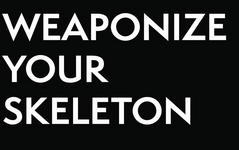That New Victim Smell

If you have the nose for it, it’s more obvious than cartoon stink lines.
One of our Master Instructors, Dave S., went on vacation to San Francisco. A great thing about that city is that unlike most west coast cities, it is almost entirely walkable. He spent a week there with his wife, sans car or cab. It was all feet and open air.
This is a very different way of life for those of us down here in southern California. The San Diego/LA metrosprawl requires a car to get anywhere and so we spend most of our transit time alone and isolated from those around us.
Dave’s experience walking around a city where everybody walks means he saw lots of people every day—a tableau writ full of information for those who can read it. Gait, body language, the way people move when they come into close contact with others. These things tell the story of that person’s interior life, their secret fears and intentions.
In short, who’s a victim and who’s not.
The first words out of his mouth when I asked about his vacation were:
“Walking the city you could see the victims. It was really sad. You could scan the crowd and count them off: victim, victim, not a victim, victim. Some people I just wanted to grab and shake them and scream, ‘Don’t walk like that! Don’t stand like that!’”
When the criminal sociopath looks for a victim, they do the same thing Dave was doing. They scan that tableau and register everybody as a target or trouble. And because they (usually) didn’t get out of bed this morning looking for a fight, or an epic battle, they slide past the trouble-makers and focus on the targets.
To the trained, and to the predator, the victims stand out. They can smell it… and see the stink lines. Acting tough doesn’t hide it. It just amplifies it.
You can’t pretend to not be a victim. The difference between victim and not-victim is unconscious confidence. It radiates from the core, outward, and shines like a beacon even when you’re not paying attention to projecting anything. Your gait, your stance, your body language will give you away, one way or the other. If you know what to do, it shows. If you don’t, well, that’s where the smell comes from.
This is the real utility of training for violence. The chances of you actually having to use this information in a life-or-death situation are so small as to approach zero. (Of course, if you do find yourself there, nothing else will do. Just as knowing how to swim is the only thing that will keep you from drowning.)
But you’ll never know how many times being trained saved you from getting picked out of the herd as a victim in the first place.
In my experience, this training changes the way people walk, stand, and carry themselves. It gives you that unconscious confidence that is beyond badass posturing or bluster. It’s always on, even when you’re not paying attention.
Though it’s a cliched martial arts oxymoron to “learn to kill so you never have to,” it turns out there’s a kernel of truth in that fortune cookie notion. As a husband, father, and instructor this is what I want for my wife, my kids, and the people I train. To be able to pull the trigger on it if that’s what’s required, but really to never, ever have to in the first place. To get passed over when someone’s sniffing for victims.
That’s what I want for you: to never know how many times this training has saved you from trouble.
— Chris Ranck-Buhr


Leave a Reply
Want to join the discussion?Feel free to contribute!